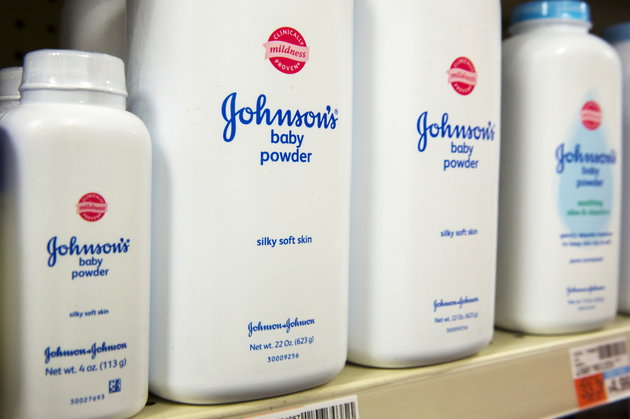As its name suggests, baby powder, a talcum powder blend that absorbs moisture and reduces chafing, used to be a common staple of diaper changing stations in homes all across America.
But Johnson & Johnson, the company that makes the leading baby powder, has been in the news lately for an alarming reason: Several lawsuits allege that decades-long use of the product has contributed to ovarian cancer in thousands of women.
Most recently, on October 27, a jury in St. Louis voted in favor of Deborah Giannecchini, awarding her more than $70 million to end the lawsuit she brought against Johnson & Johnson under the claim that years-long use of their product caused her ovarian cancer.
Previous cases with similar details have been thrown out of court for lack of evidence, while still others ended in verdicts like Giannecchini’s, in which Johnson & Johnson has been required to pay tens of millions to victims’ families.
Of course, lawsuits don’t determine whether a product actually contributes to or causes cancer. Science does that. And in this case, the science is unclear. While Giannecchini’s jury found enough evidence to decide that Johnson & Johnson misled the public by keeping the link between ovarian cancer and talcum powder hidden, scientific experts aren’t sure the link is meaningful.
“There is some literature suggesting there may be a connection between genital talcum use and ovarian cancer. It’s not entirely consistent,” Dr. Clarice Weinberg, deputy branch chief for the biostatistics and computational biology branch at the National Institute of Environmental Health Sciences, told The Huffington Post.
Johnson & Johnson plans to appeal the verdict on the basis that their product is safe.
So what should you believe? Here’s everything we know, based on the research:
THE CLAIM: TALCUM POWDER CONTAINS A CANCER-LINKED MINERAL
False. Talc, a natural mineral comprised of magnesium, silicon and oxygen, is often used in powders meant to absorb moisture and reduce friction. In its purest form, talc can also contain the mineral asbestos, which is associated with lung cancer when its fibers are inhaled over an extremely long period of time. But that doesn’t mean there is a relationship between talcum and other various cancer. And in any case, all talcum products on U.S. shelves have been asbestos-free since the 1970s.
THE CLAIM: TALCUM POWDER IS A RISK FACTOR FOR OVARIAN CANCER
The jury’s still out. It’s hard for researchers to actually test if purified talcum powder causes ovarian cancer, as it would be unethical to ask a group of women to apply a potentially carcinogenic substance to their bodies for decades to see if they develop tumors. And small case studies that ask participants to self-report baby powder use can be unreliable. This is because individual memory can be shoddy, and there is no standard way to measure how much talcum powder was sprinkled on the genital area, as well as other factors could be impacting it.
The few studies that exist are contradictory. In some lab studies, scientists exposed asbestos-free talc to animals, which resulted in an increase in tumor formation in the animal. But other studies have not seen the same result, according to the American Cancer Society.
And smaller studies in which women self-reported talcum use has shown a slight increase in risk. But other studies have shown no increase.
Overall, ovarian cancer is the fifth most deadly cancer among women. It causes more deaths than any other cancer in the female reproductive system, according to the U.S. Centers for Disease Control and Prevention, and in 2016, just more than 22,200 American women were estimated to receive an ovarian cancer diagnosis, according to the American Cancer Society.
It is also more common in older women ― most people with ovarian cancer are older than 63. A family history of breast or ovarian cancer can increase your risk, and research shows inheriting the BRCA1 genetic mutation is associated with an increased risk of ovarian cancer. There is evidence that if you’ve never given birth to a child, have endometriosis or are just approaching middle age or older, your risk for ovarian cancer can increase as well, according to the CDC. This doesn’t mean that if you have all or any of these conditions that you will get ovarian cancer – just that these are some risk factors associated with it.
To read this entire article by The Huffington Post on The Clearity Portal, please click here.


